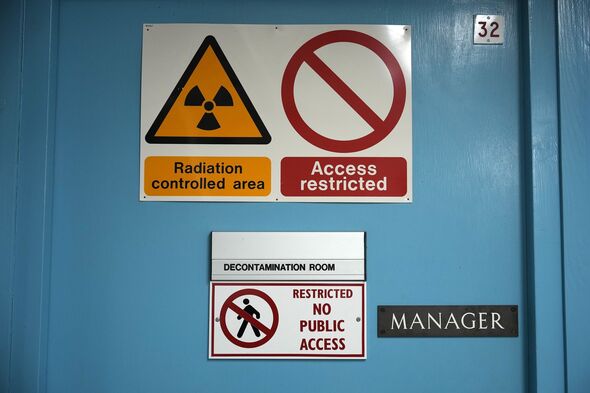
SWITZERLAND'S MAD RULE THAT MEANS THAT EVERYONE IS LEGALLY ENTITLED TO THEIR OWN BUNKER
Switzerland, renowned as the pinnacle of atomic shelters, has carved a distinguished path in constructing and outfitting bunkers since 1962. Remarkably, Switzerland stands as the sole nation globally to enforce a law that guarantees every citizen the right to an underground sanctuary since 1962. Precisely speaking, it grants one square metre per person.
This policy emerged from concerns stemming from the aftermath of the Hiroshima and Nagasaki bombings and, more prominently, from the prevailing fear during the Cold War era. Concrete steps were taken in 1963 with the establishment of the Federal Office for Civil Protection, which mandated the construction of civil protection shelters or nuclear bunkers.
The uniqueness of this policy, recently brought into focus due to the Ukrainian conflict, has earned Switzerland international acclaim. Dictators have even sought the assistance of Swiss companies in building and equipping their bunkers.
"During the popular uprising in Libya in 2010, Al-Jazeera followed demonstrators entering one of Colonel Gaddafi's villas in Al-Baida and filmed a bunker with a ventilation system that had been fully equipped by a Swiss company," recounts Iskander Guetta, one of the curators of the exhibition "Aux abris" in Lausanne.
This captivating anecdote is derived from an essay titled "Switzerland's rise to global bunker expertise in the atomic age."
Its author, Silvia Berger Ziauddin, a professor of contemporary history at the University of Bern, reports that Swiss companies were also involved in Iraq from the 1980s, during Saddam Hussein's regime.
These companies occasionally undertook military infrastructure projects, including underground hospitals and shelters accommodating tens of thousands of people.
Silvia Berger Ziauddin points out, "Potentates like Gaddafi or Hussein have not only relied on Swiss companies for their shelter projects, but also on companies from various other countries. The Finns and Germans, for example, were also very active in the region."
Silvia Berger Ziauddin's research primarily focused on Switzerland during the Cold War period and civil protection shelters.
READ MORE: 'Restless leg syndrome' Putin sparks health row over twitching legs
Exploiting the fears surrounding the Cold War and its nuclear threats, Switzerland gradually ascended to become the epitome of bunker design and technology.
"Construction guidelines and technology transfers [with the United States in particular] have enabled the Swiss bunker to embark on a successful career around the world," writes Silvia Berger Ziauddin.
According to the Federal Office for Civil Protection (OFPP), nearly 12 billion has been invested in building bunkers in Switzerland since 1962.
The majority of these structures are privately owned and located beneath buildings or houses. The responsibility for these bunkers lies with the cantons and municipalities. Interestingly, policies regarding bunkers vary across different cantons. Iskander Guetta highlights, "Fribourg, for example, has 100 percent public shelters. In the canton of Appenzell Innerrhoden, on the other hand, every house has its own shelter."
As of the end of 2023, the OFPP states that Switzerland will have approximately 9.3 million protected spaces distributed across almost 370,000 shelters, including 9,000 public bunkers, accommodating around 8.7 million inhabitants.
This represents a coverage rate of 107 per cent. However, there are disparities among cantons, with five, like Vaud, having less than 100 per cent coverage.
In early May, the OFPP announced the phase-out of small shelters, which can hold up to seven individuals, in favour of larger facilities, primarily public ones. One reason for this decision was the outdated ventilation equipment, which is over 40 years old and no longer produced. This measure affects around 100,000 structures with a capacity of 700,000 seats, explains Andreas Bucher from the OFPP.
Small shelters, which have historically been repurposed for various uses beyond the threat of armed conflicts, such as storage or DIY rooms, wine cellars, or even living spaces, need not be a cause for concern.
However, questions arise regarding the utilisation of large public shelters capable of accommodating 300 to 5,000 people, or even more. "These are very large spaces that are generally not used. This is the case for the Beaulieu PC shelter in Lausanne, the largest in the region with its 3,048 spaces, which is completely empty. What potential does it have?" wonders Iskander Guetta.
The choice of the exhibition location in Lausanne was deliberate-the bunker within the former Post Office building at the railway station remains unchanged since its construction in the 1960s.
Additional reporting by Maria Ortega
2023-06-03T06:11:52Z dg43tfdfdgfd